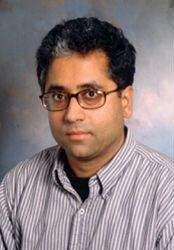Contribute
| A Framework For Thinking About Indian History |
C. Gopinath.
12/23/2009
On 13 December 2009, Dr. Prasannan Parthasarathi, Boston College, spoke on the above subject in Hall A of the Science Center at Harvard University, Cambridge. This was the second in the Outreach Lectures of the Department of Sanskrit and Indian Studies of Harvard University, for 2009-2010 academic year.
Welcoming the audience, Prof. Bijoy Misra, Convener of the Outreach Committee explained that these lectures, which began in 1995, were established to serve as a bridge between the Department and the larger Harvard community. Over the years the lectures have covered several aspects of Indian Studies including culture, arts, history, religion, architecture, philosophy, languages and literature, etc. Beginning this academic year, a new series of events was being organized on the theme of ‘Indian Society through the Ages.’
Dr. Parthasarathi’s lecture was originally titled ‘Indian History from 5000 BC.’ However, he explained at the start that he felt it was too broad a sweep of history to try to accomplish in one hour. So decided to revise the theme with the objective of giving the audience a way to understand and frame Indian history.
Some western scholars like J. S. Mill and even Karl Marx believed that from the time of Alexander’s invasion in 327 BC to about the time of Vasco da Gama’s travel in 1480, there was not much to Indian history. They believed that it did not have the profound consequences for the world (such as capitalism, democracy) like the history of Europe. Other negative perceptions were about the behavior and practices of the people in the sub-continent.
Dr. Parthasarathi argued that Indian historians did not fully accept this view. Archeological and other investigations have led to revised perceptions of history. To make this point the speaker compared the contents pages of revised editions of Romila Thapar’s famous books on history. Data of economic historians have also showed that India accounted for 25% of world manufacturing in 1750 which dropped to 9% in 1860.
Dr. Parthasarathi argued that the most common way of perceiving Indian history was limited to the sub-continent bordered by the seas on the east and west, and the Himalayan range in the north. However, taking into account the extensive trading and cultural influence that took place towards the west (with the communities in the Persian Gulf) and in the east (upto Myanmar and Cambodia), the ideas about Indian activities needs to be broadened. The Mughal empire had an extensive reach into Central Asia. In payment for trade, silver flowed into India to the extent that it accounted for about 25% of the world’s silver around 1600-1800.
Thus, the speaker’s point was that a ‘national’ history tended to be restricted to discussions about People and Territory in the sub-continent. Instead we need to add two more dimensions: the Regional (e.g., South East Asian context) and the position of India in the global order for a more appropriate perception of Indian history. Dr. Parthasarathi’s hour-long presentation was very well received by the audience. The talk was followed by a discussion which included questions of clarification and comments from the audience on their perspectives on history.
The next event in this series will be on ‘Indus: The unvoiced civilization,’ a video presentation on the Indus Valley civilization and discussion led by Ms. Nalini Gopinath and Dr. Richard Meadow, on 10 January, 3-5 pm, Hall A, Science Center, Harvard University.
You may also access this article through our web-site http://www.lokvani.com/
